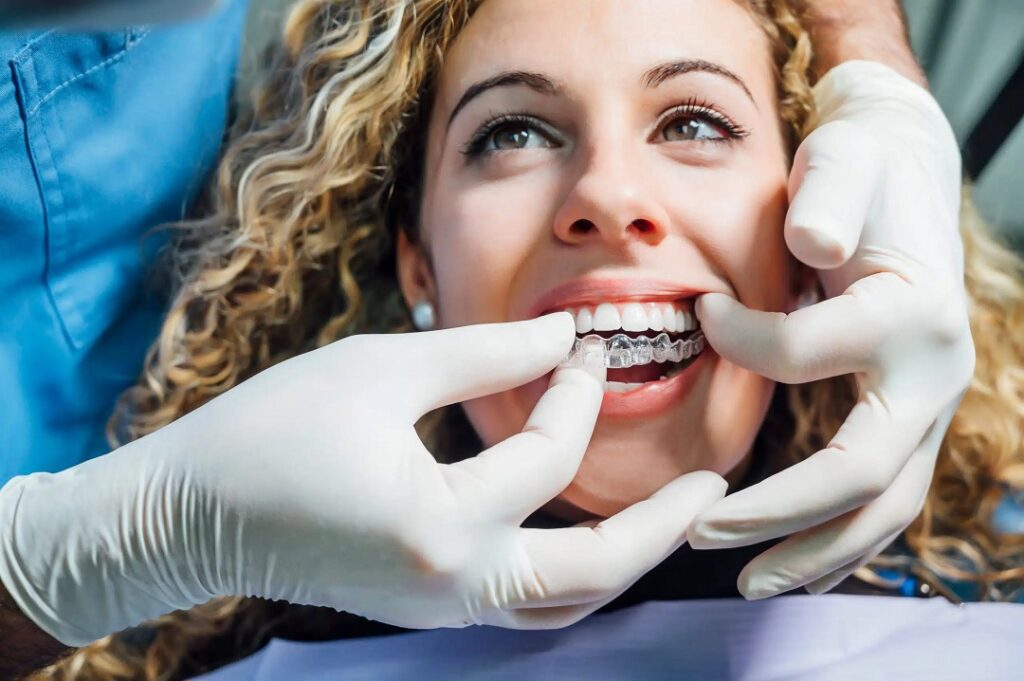Clear aligners have revolutionized orthodontics, offering patients a more discreet and comfortable alternative to traditional braces. However, not all orthodontic cases can be fully corrected by aligners alone.
In more complex cases, orthodontists often rely on aligner attachments—small, tooth-colored bumps bonded to the teeth—to ensure the treatment’s success. These attachments play a crucial role in enhancing the effectiveness of clear aligners, allowing for better control of tooth movements and more predictable results.
What Are Aligner Attachments?
Aligner attachments, also known as buttons or bumps, are tiny, composite resin structures that are affixed to specific teeth. They are strategically placed to increase the grip and force exerted by the aligners on the teeth, helping to facilitate movements such as rotations, extrusions, or intrusions, which would otherwise be difficult to achieve with aligners alone.
These attachments are custom-designed for each patient and work in tandem with the aligners to deliver the desired results more efficiently.
How Aligner Attachments Work
Aligner attachments serve as anchors that give the aligners a better grip on the teeth, allowing for the application of targeted force. When the aligners fit over the attachments, they use pressure points to guide teeth into their correct positions. This is particularly helpful in cases where certain teeth need to be rotated, tilted, or moved vertically.
Attachments come in various shapes and sizes, depending on the type of movement required. Some are designed to help with complex movements like extrusion (pulling a tooth out of the gum line) or intrusion (pushing a tooth back into the gum). Others may help with root movements, such as tilting or rotating a tooth for better alignment.
The Benefits of Aligner Attachments
Improved Tooth Control: Attachments enable better control over difficult tooth movements, ensuring more precise results.
Versatility in Treatment: They allow clear aligners to treat a wider variety of orthodontic cases, including severe malocclusions and rotations that were once only treatable with braces.
Enhanced Treatment Efficiency: Attachments speed up treatment by providing the extra force needed to move teeth more quickly and predictably.
Discreet and Comfortable: Although attachments are visible when the aligners are off, they are small and tooth-colored, making them more discreet than traditional brackets and wires.
When Are Aligner Attachments Necessary?
While many patients can achieve excellent results with clear aligners alone, some cases may require the additional force provided by attachments. These include:
Rotating Teeth: Aligners may struggle to rotate teeth without attachments.
Moving Teeth Vertically: For cases where teeth need to be raised or lowered in the gum line, attachments are essential.
Severe Crowding or Gaps: When teeth are significantly crowded or spaced apart, attachments can help close the gaps or make room for better alignment.
Caring for Attachments and Aligners
Maintaining good oral hygiene is essential when wearing aligner attachments, as plaque can build up around them if not properly cleaned. Patients should continue brushing and flossing regularly and be mindful of keeping both the attachments and the aligners clean.
Aligner attachments have greatly expanded the capabilities of clear aligner treatments, allowing for more complex tooth movements and improved patient outcomes.
By providing additional grip and control, they make clear aligners a more effective option for patients who require intricate tooth adjustments. For patients seeking a discreet yet powerful orthodontic treatment, aligner attachments offer the perfect balance of aesthetics and functionality.
As orthodontic technology continues to advance, the role of attachments will likely become even more integral in clear aligner treatments, helping more patients achieve their dream smiles without the need for traditional braces.


